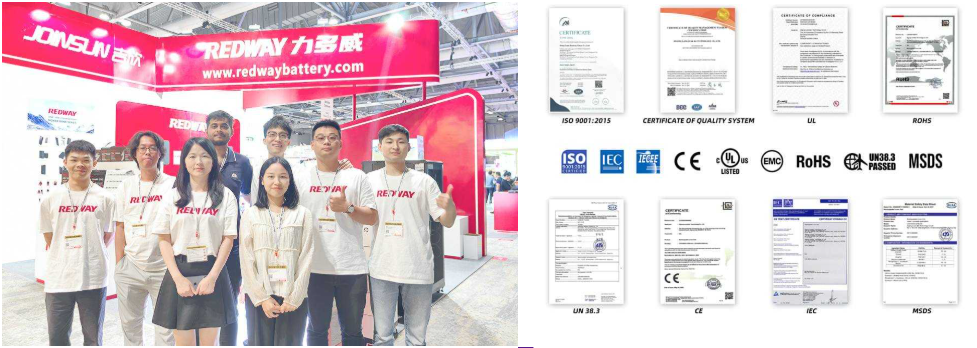Installing LiFePO4 batteries in an RV requires careful planning and execution to ensure safety and optimal performance. This process involves preparing the installation area, selecting appropriate tools, securing connections, and conducting thorough testing after installation.
What Are the Steps to Prepare for Installing LiFePO4 Batteries?
Before beginning the installation of your LiFePO4 batteries, follow these preparation steps:
- Disconnect Power Sources: Ensure that all power sources are turned off, including shore power and solar panels.
- Assess Power Needs: Calculate your energy requirements based on appliances and devices you plan to use.
- Choose Compatible Equipment: Verify that your inverter, charger, and other components are compatible with LiFePO4 technology.
Chart: Energy Requirements Assessment
Wholesale lithium golf cart batteries with 10-year life? Check here.
| Appliance | Power Consumption (W) | Hours Used Per Day | Daily Consumption (Wh) |
|---|---|---|---|
| Refrigerator | 100 | 24 | 2400 |
| Lights | 10 | 5 | 50 |
| Water Pump | 50 | 1 | 50 |
| Total | 2500 |
How Do You Choose the Right Location for Battery Installation?
Choosing the right location is crucial for safety and efficiency:
- Consider Ventilation: Ensure that the location allows for adequate airflow around the battery.
- Accessibility: Select a spot that is easily accessible for maintenance.
- Weight Distribution: Place batteries low and centered within the RV to maintain stability.
What Tools Are Necessary for the Installation Process?
Having the right tools will make your installation smoother:
Want OEM lithium forklift batteries at wholesale prices? Check here.
- Wrenches/Sockets: For securing battery terminals.
- Drill: If you need to create mounting holes.
- Wire Strippers/Cutters: For preparing wiring connections.
- Multimeter: To check voltage levels during installation.
Know More:
How Do You Install LiFePO4 Batteries in an RV?
How Can You Properly Install a LiFePO4 Battery in Your RV?
How Can You Safely Install LiFePO4 Batteries in Your RV?
How Can You Optimize Space When Installing Multiple Batteries in RVs?
How Do You Securely Connect LiFePO4 Batteries to the RV System?
Follow these steps when connecting your batteries:
- Connect Positive Terminal First: Attach the positive (red) terminal of the battery first.
- Use Proper Wiring: Ensure that you use wires rated for high voltage applications.
- Double-Check Connections: Make sure all connections are tight to prevent energy loss or short circuits.
Chart: Connection Order
| Step | Action |
|---|---|
| 1 | Connect positive terminal |
| 2 | Connect negative terminal |
| 3 | Secure all connections |
What Safety Precautions Should Be Taken During Installation?
Safety is paramount during installation:
- Wear Protective Gear: Use gloves and goggles while working with batteries.
- Avoid Sparks: Keep tools away from battery terminals when connecting.
- Follow Manufacturer Guidelines: Always adhere to specific instructions provided by battery manufacturers.
How Can You Test the Installation After Completing It?
After installation, testing ensures everything functions correctly:
- Power Up Systems Gradually: Turn on systems one at a time while monitoring performance.
- Check Voltage Levels: Use a multimeter to verify that voltage levels are within acceptable ranges.
- Monitor Performance Over Time: Keep an eye on battery performance during initial usage.
What Maintenance Is Required After Installation?
Regular maintenance helps prolong battery life:
- Inspect Connections Regularly: Check that all connections remain tight and corrosion-free.
- Monitor Charge Levels: Keep track of battery charge levels using a monitoring system.
- Clean Terminals: Periodically clean battery terminals to prevent buildup.
Expert Views
“Installing LiFePO4 batteries in your RV can significantly enhance your power capabilities,” states an expert from Redway. “Proper installation not only ensures safety but also maximizes efficiency, allowing you to enjoy your adventures without worrying about power limitations.”
Conclusion
In conclusion, installing LiFePO4 batteries in an RV involves careful preparation, strategic placement, secure connections, and ongoing maintenance to ensure optimal performance and safety. By following these guidelines, RV owners can effectively harness the benefits of modern battery technology.
FAQ Section
- What should I do if my battery system isn’t working after installation?
Check all connections and ensure compatibility with existing equipment; use a multimeter to diagnose issues. - Can I install multiple LiFePO4 batteries together?
Yes, multiple batteries can be connected in parallel or series depending on your power requirements; ensure proper balancing. - How often should I perform maintenance on my batteries?
Regular checks every few months are recommended; however, monitor them more frequently if used heavily or under extreme conditions.





